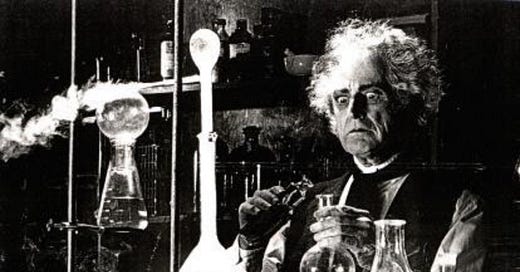It is natural for us to fall in love with our business ideas. However, how do we know if they are worth pursuing or not? With our sensible hat on, we should seek evidence. To that end, this post explores ways to test our ideas, to reduce the risk of wasting time and resources implementing them.
I draw upon the approach detailed in the Testing Business Ideas book by David Bland and Alex Osterwalder.
Our business plan
Before we can test our business idea, we need to develop a business plan. Crafting our business plan provides a suggested approach. Our business plan details assumptions (or hypotheses) relating to the following themes:
Desirability: Customers want our product.
Feasibility: We can build and deliver our product.
Viability: Our business is financially sustainable.
What to test
A founding vision for a startup is similar to a scientific hypothesis. - Rashmi Sinha (Slideshare founder)
We should construct a series of testable hypotheses relating to key aspects of our business plan. A hypothesis is an assumption that we believe needs to be true for our idea to work. When constructing a hypothesis it should start “We believe that…”, e.g. “We believe that senior managers will pay £20/hour to easily generate concise and valuable notes for their meetings.”
The most important of these should be tested via experiments. Each experiment should be described in terms of Input (or effort) required and Output (evidence strength) on a 1 to 5 scale. Select experiments based on the hypothesis they are testing, current level of uncertainty and urgency, plus resource we have available. With reference to the business plan, the priority order experiments should be undertaken in by theme is roughly: Desirability, Feasibility then Viability.
Experiment cards
For each hypotheses we wish to test, we create experiment card(s) which detail:
Name of the test.
Hypotheses: We believe that…
Test: To verify that, we will…
Metric: And measure…
Criteria: We are right if…
As experiments are undertaken, insight is gained which either supports our business idea or suggests we should adapt or abandon it.
Experiments for software businesses
There are many types of experiment to consider (44 are detailed in the Testing Business Ideas book). Here are suggested sequences of experiments for software businesses:
B2B (Business to Business): Customer interview, Discussion forum, Boomerang (customer feedback on competitor product), Clickable prototype, Presale and Single feature MVP (Minimum Viable Product with one key feature).
B2C (Business to Consumer): Customer interview, Search trend analysis, Online ad, Simple web page, Email campaign, Presale and Concierge (manual service).
Email campaign
Input = 2/5. Output = 3/5.
Themes = Desirability and Viability (Test value proposition with customer segment.)
Prepare: Define goals and audience. Create series of emails to provide incremental value over a few days.
Execute: Run email campaign and be responsive to those who reply.
Analyse: Review which emails drive the most opens, clicks and replies.
Clickable Prototype
Input = 2/5. Output = 2/5.
Themes = Desirability, Feasibility and Viability (Rapidly test concept with customers.)
Prepare: Define goals and audience. Create clickable prototype screens. Schedule test with target customers.
Execute: Explain to target customers the purpose is to gather feedback on what you plan to deliver. One person interacts with customers and another takes notes.
Analyse: Place notes and observations next to sketches. Identify where customers got stuck or excited. Use feedback to inform next experiment.
Presale
Input = 3/5. Output = 5/5.
Themes = Desirability and Viability (Gauge demand at smaller scale before public launch.)
Prepare: Create simple landing page with buttons for price options (from business plan). When clicked show a message indicating that the product is not available yet.
Execute: Make page live and drive traffic to it.
Analyse: Review analytics on how many people: viewed and clicked price option, added payment details, clicked pre-order and dropped out.
Single Feature MVP
Input = 4/5. Output = 5/5.
Themes = Desirability, Feasibility and Viability (Find out if the core value proposition meets customers’ needs.)
Prepare: Develop our product with one feature that addresses the most significant customer need. Identify target customers to try it.
Execute: Get customers to try the product then gather their feedback.
Analyse: Review level of customer engagement and feedback.
Other resources
Testing Business Ideas talk by David Bland
Business Model Generation book by Alex Osterwalder
Quick Ways to Test Your Business Idea is Viable post by Business Gateway
Entrepreneurial Strategies & Anti-Patterns for a Calm SaaS Business video by Arvid Khal
This post suggests ways to test our business ideas to gain evidence whether we should pursue them or not. Until next Sunday, I hope you enjoy your time in the lab.
Have fun.
Phil…




